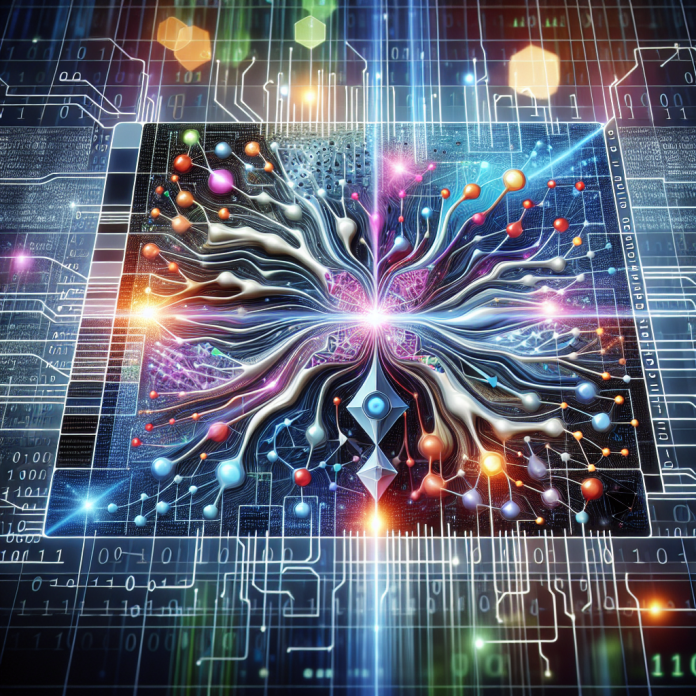Convolutional Neural Networks (CNNs) have revolutionized the field of computer vision, enabling machines to perceive and understand visual information in ways that were once thought to be only within the realm of human cognition. In this deep dive, we will explore the inner workings of CNNs, uncovering their importance, applications, and impact on various industries.
### The Rise of CNNs
Imagine you are scrolling through your social media feed and come across a post with a photo of a cute puppy. You immediately recognize it as a puppy, not a kitten or any other animal. How does your brain do this so effortlessly? This innate ability to identify images stems from the complex neural networks in our brain, which process visual information in layers.
CNNs mimic this biological process by using multiple layers of neurons to extract features from images. These networks have gained prominence in recent years due to their ability to perform tasks like object detection, image classification, and facial recognition with remarkable accuracy. Their rise to prominence is fueled by the exponential growth of visual data on the internet and the pressing need for automated systems to analyze and interpret this data.
### How CNNs Work
At the heart of CNNs are convolutional layers, which apply filters to input images to extract low-level features like edges and textures. These filters slide across the image, capturing patterns that are crucial for understanding its content. As the network progresses through pooling and activation functions, it learns to recognize more complex features like shapes, objects, and textures.
One of CNNs’ key strengths lies in their ability to learn features hierarchically. The early layers of the network capture basic features, while deeper layers combine these features to identify higher-level patterns. This hierarchical learning process allows CNNs to recognize objects with varying levels of abstraction, making them versatile and robust in handling diverse visual data.
### Applications of CNNs
The applications of CNNs span across a wide range of industries, revolutionizing how we interact with technology and enhancing various aspects of our daily lives. In healthcare, CNNs are used for medical image analysis, assisting doctors in diagnosing diseases like cancer and identifying abnormalities in X-rays and MRIs with high accuracy.
In the automotive industry, CNNs power self-driving cars by enabling them to recognize objects like pedestrians, cyclists, and traffic signs. This technology is paving the way for a future where cars can navigate autonomously, reducing accidents and improving road safety.
Moreover, CNNs have found applications in retail, where they are used for product recommendation systems based on customer preferences and image analysis for inventory management. They are also leveraged in security systems for facial recognition to enhance building access control and surveillance.
### The Evolution of CNNs
The evolution of CNNs has been marked by continuous advancements in model architectures, training techniques, and computational resources. From the pioneering LeNet-5 model developed in the 1990s to the state-of-the-art models like ResNet, Inception, and EfficientNet, CNNs have evolved to become deeper, more efficient, and more accurate in performing complex visual tasks.
The training of CNNs has also been revolutionized by techniques like transfer learning, fine-tuning, and data augmentation, which facilitate the efficient utilization of pre-trained models and small datasets. This has democratized the adoption of CNNs across various domains, making it accessible even to those with limited resources.
### The Impact of CNNs
The impact of CNNs on society is profound and far-reaching, permeating various aspects of our daily lives and transforming industries across the board. In healthcare, CNNs have facilitated early detection of diseases, leading to faster treatments and improved patient outcomes. They have also streamlined medical imaging processes, reducing the burden on healthcare professionals and improving diagnostic accuracy.
In agriculture, CNNs are used for crop monitoring and yield prediction, helping farmers optimize their farming practices and improve crop productivity. In education, CNNs are leveraged for personalized learning platforms that adapt to students’ individual learning styles, making education more engaging and effective.
### Looking Towards the Future
As we continue to push the boundaries of AI and machine learning, CNNs will play an increasingly pivotal role in shaping the future of technology and society. With advancements in model architectures, training techniques, and computational resources, CNNs will become more efficient, accurate, and versatile in handling complex visual tasks.
Furthermore, the integration of CNNs with other AI technologies like natural language processing and robotics will pave the way for more sophisticated applications in fields like virtual reality, augmented reality, and autonomous systems. The possibilities are endless, and the potential for innovation and impact is immense.
In conclusion, CNNs have transformed the way we interact with visual data, enabling machines to perceive and understand images in ways that were once thought to be exclusive to human cognition. Their applications across diverse industries have revolutionized processes, improved efficiency, and enhanced decision-making.
As we look towards the future, the evolution of CNNs will continue to redefine the possibilities of AI and machine learning, propelling us towards a world where machines can see, think, and act with unparalleled precision and intelligence. The journey has just begun, and the potential for innovation and advancement is limitless. CNNs have truly ushered in a new era of visual intelligence, and the future looks brighter than ever before.

